Are you gearing up for outdoor activities? Finding the right balance between comfort and protection is crucial. That's where the softshell fabric comes into play.
Table Of Contents
What is softshell fabric?
Softshell is a water-resistant and breathable special woven fabric often consisting of 3 or more layers. Usually, the top layer is stretchy, hard plain woven, or knitted jersey with water resistance. The middle layer is waterproof and breathable thin materials, mostly TPU (thermo polyurethane). The inner layer is soft brushed fleece or tricot fabric. So all together, make it soft, flexible, water resistant, water and windproof. Softshell fabric is an ideal choice for outdoor activities, including skiing, hiking, mountaineering, and campaigning.

Figure: 94% Polyester 6% Spandex 3 Layer Softshell Fabric
Softshell material replaces the rigidness of shell fabric with its inner smooth surface. The term soft came from the inner soft characteristics.
As the name suggests, softshell is a counterpart of hardshell. The word “softshell” word which indicates a category of technical fabrics designed to ensure maximum comfort in situations of variable weather. Softshell fabric was introduced in the early to mid-2000s in outdoor clothing to enhance breathability, waterproof, and windproof and give its wearer comfort with moving, dry, and warm.
Types of Softshell Fabric

- Membrane Softshell: This type of softshell includes a thin, TPU-breathable membrane between the outer and inner layers. It offers better wind and water resistance in harsh weather conditions. However, it may sacrifice some breathability compared to non-membrane versions.
- Non-Membrane Softshell: As the name suggests, this type lacks the protective membrane. It's more breathable but less weather-resistant. It's perfect for high-intensity activities where you prioritize breathability over protection.
- Hybrid Softshell: This variant combines both membrane and non-membrane panels in one garment, offering a balanced approach. It provides enhanced protection in key areas (like the front of a jacket) while maintaining breathability in others.
Characteristics
1. 4 Way Stretch Fabric: Softshell fabric often incorporates spandex, which provides four-way stretch capabilities. This allows the fabric to move in all directions, ensuring maximum comfort and freedom of movement.
2. 2-Way Stretch Fabric: In some cases, the softshell fabric may only stretch in two directions, typically horizontally. This still provides a good level of flexibility but with slightly less range of motion compared to four-way stretch fabrics.
What is softshell fabric made of?
Softshell fabric made of at least 2-3 fabric layers bound by adhesive, sewing, needle punching, or another alternative way. The outer part is made of hard shell fabric material and the inner part is made of soft material such as velvet, fleece, mesh, sherpa, interlock fabric, and so on.
Layer of Softshell Fabric
|
Layer |
Material |
Function |
|
1st Layer (Outer Layer) |
Shell Material |
High-density, water-repellent polyester/nylon; provides resistance to external agents like rain or snow. |
|
2nd Layer (Middle Layer) |
Thermal Insulation |
Breathable membrane (TPU) that allows moisture to evaporate without wetting the interior. |
|
3rd Layer (Inner Layer) |
Direct Contact with the Skin |
Soft brushed or fleece fabric ensures good thermal insulation and comfort against the skin. |
2 Layer SoftShell

In two layers softshell has outer and inner layers only. The outer layer is made of hardshell fabric and the inner layer is made of soft material. Most of the time, the inner layer is brushed to increase softness. Such as Polyest Birds Eye mesh bonded with Tricot.
3 Layer Softshell
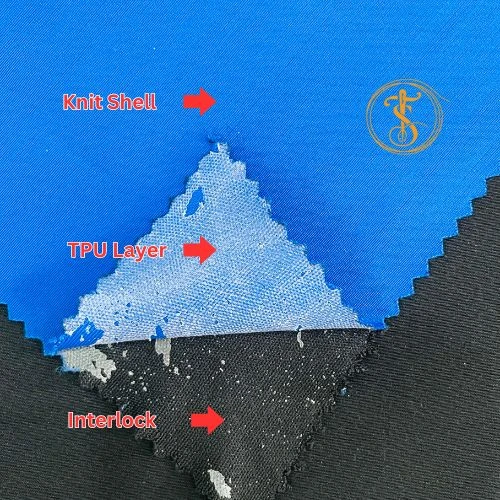
3-layer softshell fabric has a TPU (Thermoplastic Polyurethane) membrane, a bit like a sandwich. TPU is a water-based and solvent-based coating that has strong adhesion to fabrics which is ideal for fabric that will utilize welded seams. It works like a membrane. It prevents passing water droplets but allows vapor and moisture from the body.
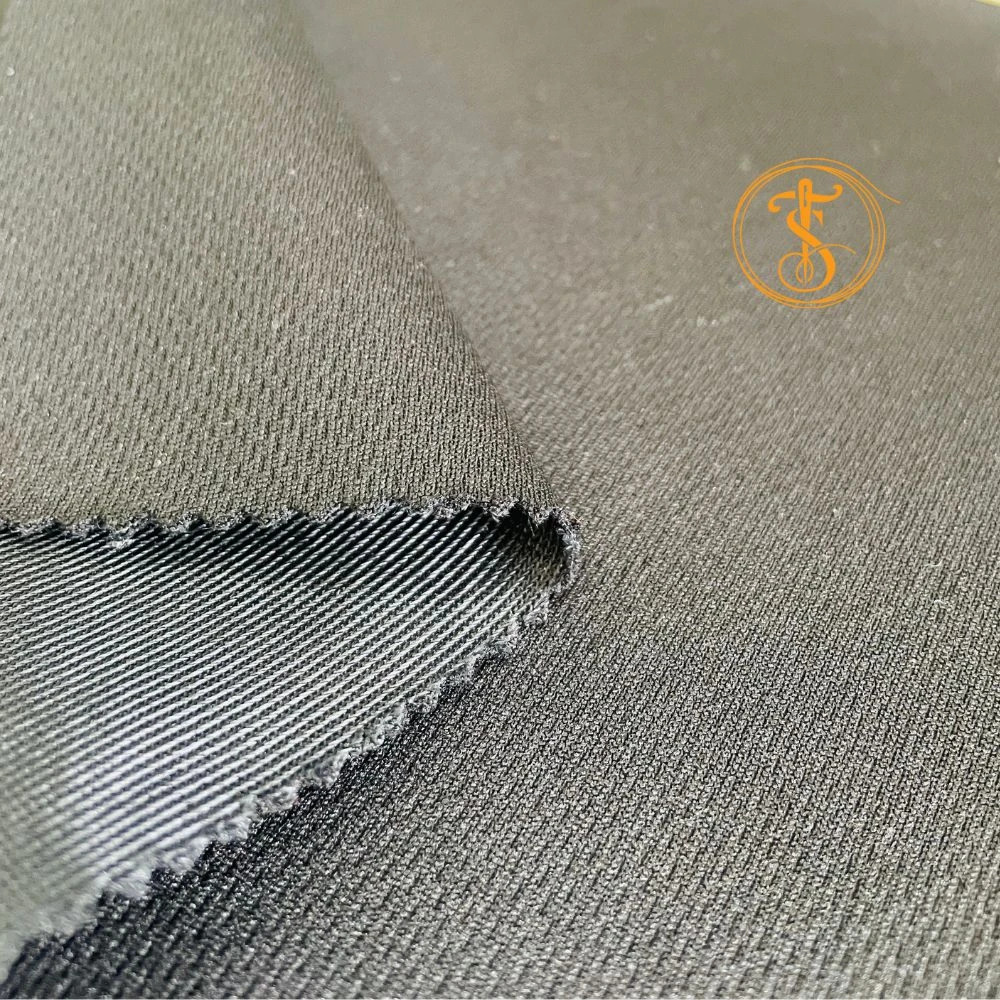
Picture: Mesh Bonded Tricot Softshell Fabric
Most of the time, the top part is water repellent, and the middle layer has a breathable membrane and inner surface soft thermal insulating material. Example: Polyester Knit bonded Interlock
Are softshells waterproof?
There are several questions such as: Are soft shell jackets waterproof? Or Are softshell jackets windproof?
In most cases, softshells are water-resistant for their structure. For waterproofing it can withstand with levels. It depends on the two factors. WP and MVP.
Water Proof:
WP measured in mm by Water Column Tester. The range of wp is from 1000 mm to 3000 mm. In some cases, it’s 10,000 mm. The DWR ((Durable Water Repellent) coating on the outer layer protects against light rain and snow, making it a versatile choice for unpredictable weather. However, it's important to note that softshell fabric isn't fully waterproof, so it's not the best choice for heavy rain.
Wind Proof:
Is softshell fabric windproof? The answer is determined by an air permeability test. It’s measured in CFM (cubic feet/minute). CFM indicates that 0 represents the perfect insulation from the outer environment.
Some softshell fabrics, particularly with a TPU membrane, offer good wind resistance. However, non-membrane softshells may not be fully windproof but still provide some protection against the wind.
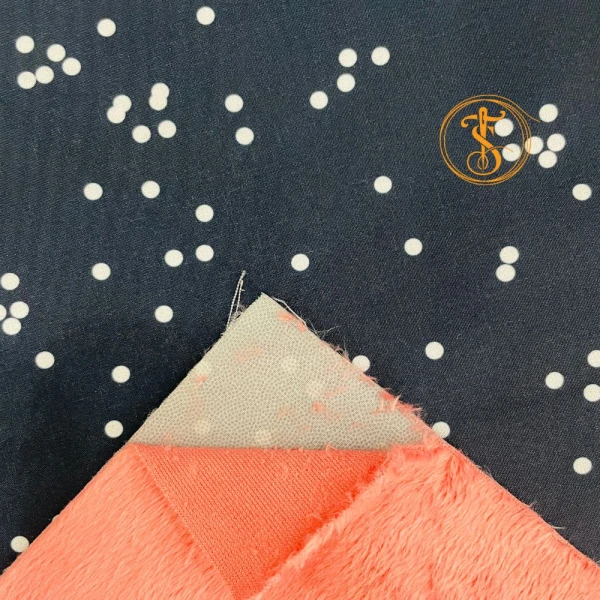
Breathability
A breathability test is used to measure MVTR (Moisture vapor transmission rate) in Gm/m2/24hrs. It indicates how much moisture passes through a 1 square meter portion of fabric in 24 hours.
Hardshell materials that trap heat and moisture, softshell fabric allows air to circulate. It prevents you from overheating during physical activity. This breathability makes it ideal for activities that require a lot of movement, like hiking or skiing.
Benefits of Softshell Fabric
Flexibility and Comfort
2 way and 4 way softshell fabric is designed with movement in mind. Softshell is more comfortable due to inner flexible fleece materials that can easily move with the wearer. The incorporation of spandex ensures that the fabric stretches and allows maximum motion. Whether you're scrambling up a rocky incline or reaching for a handhold while climbing, softshell
Lightweight Insulation
While the softshell fabric isn't as warm as a down jacket or thick fleece, it does provide a degree of insulation that makes it suitable for cool weather. The inner layer of microfleece or similar material traps heat close to your body, providing warmth without the bulk.
Durability
Softshell fabric is known for its durability. The tightly woven outer shell layer is resistant to abrasions. It can withstand rough terrain and repeated wear. This durability makes it a reliable choice for outdoor gear that's going to see a lot of use.
What is softshell used for?
Softshell fabric is widely used in outdoor and active wear due to its balance of comfort, protection, and flexibility.
Softshell jackets and coats are popular for hiking, climbing, and skiing, offering wind and water resistance while remaining breathable.
Softshell pants are ideal for trekking and mountaineering, providing durability and freedom of movement. Softshell vests are great for layering, offering core warmth without restricting arm movement, making them perfect for running and hiking.
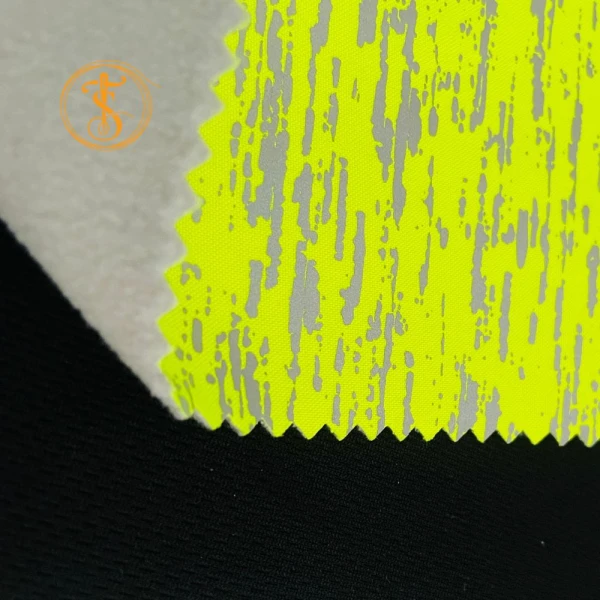
In athletic wear, softshell is favored for its stretch and moisture-wicking properties. That makes it ideal for running and cycling. The fabric is also used in gloves, ensuring warmth and dexterity in cold conditions. Headgear like hats and headbands, offer protection against wind and cold.
Hardshell Fabric Vs Soft Shell Fabric
Here’s a table that highlights the key differences between hardshell and softshell fabrics:
|
Feature |
Hardshell Fabric |
Softshell Fabric |
|
Waterproofing |
Fully waterproof, designed to protect against heavy rain and snow. |
Water-resistant, suitable for light rain and snow. |
|
Breathability |
Limited breathability due to its waterproof nature. |
Highly breathable, allowing moisture to escape and preventing overheating. |
|
Flexibility |
Rigid and less flexible, often restricting movement. |
Stretchy and flexible, allowing for greater freedom of movement. |
|
Comfort |
Can feel stiff and uncomfortable, especially over long periods. |
Soft and comfortable against the skin, suitable for extended wear. |
|
Wind Resistance |
Excellent windproofing, blocks out wind entirely. |
Provides wind resistance, but not as effective as hardshell. |
|
Weight |
Heavier due to multiple layers and waterproof membranes. |
Lighter, offering a balance between protection and mobility. |
|
Durability |
Highly durable, resistant to abrasions and harsh conditions. |
Durable, but generally less so than hardshells in extreme environments. |
|
Best For |
Extreme weather conditions like heavy rain, snow, and strong winds. |
Moderate weather conditions, active outdoor activities like hiking and climbing. |
|
Layering |
Often used as the outermost layer in a 3-layer system. |
Can be used as a mid-layer or outer layer depending on the conditions. |
|
Ideal Activities |
Mountaineering, alpine skiing, expeditions in harsh climates. |
Hiking, trekking, casual skiing, and other active pursuits in milder conditions. |
Common Question
1. Is softshell fabric suitable for heavy rain?
No, Softshell fabric is water-resistant but not fully waterproof. So it's not the best choice for heavy rain. For prolonged exposure to wet and harsh conditions, a hardshell jacket is appropriate.
2. How do I care for my soft-shell jacket?
To care for your softshell jacket, wash it in cold water with a mild detergent. Always try to avoid using fabric softeners. Air drying is recommended.
3. Can I wear softshell fabric in cold weather?
Yes, softshell fabric provides lightweight insulation, making it suitable for cool weather. For extremely cold conditions, you may need to layer it with additional insulation.
4. What makes softshell fabric different from fleece?
The softshell fabric typically includes a protective outer layer. It may have a breathable membrane, with 2-3 layers. While the fleece is usually a single-layer fabric that provides warmth but lacks water and wind resistance.
5. Is softshell fabric durable?
Yes, softshell fabric is known for its durability. The tightly woven outer shell layer is resistant to abrasions, making it a great choice for outdoor activities that involve rough terrain.
Conclusion
The softshell fabric has revolutionized outdoor clothing. Its unique combination of breathability, flexibility, and weather resistance makes it an excellent choice when looking to stay comfortable and protected.





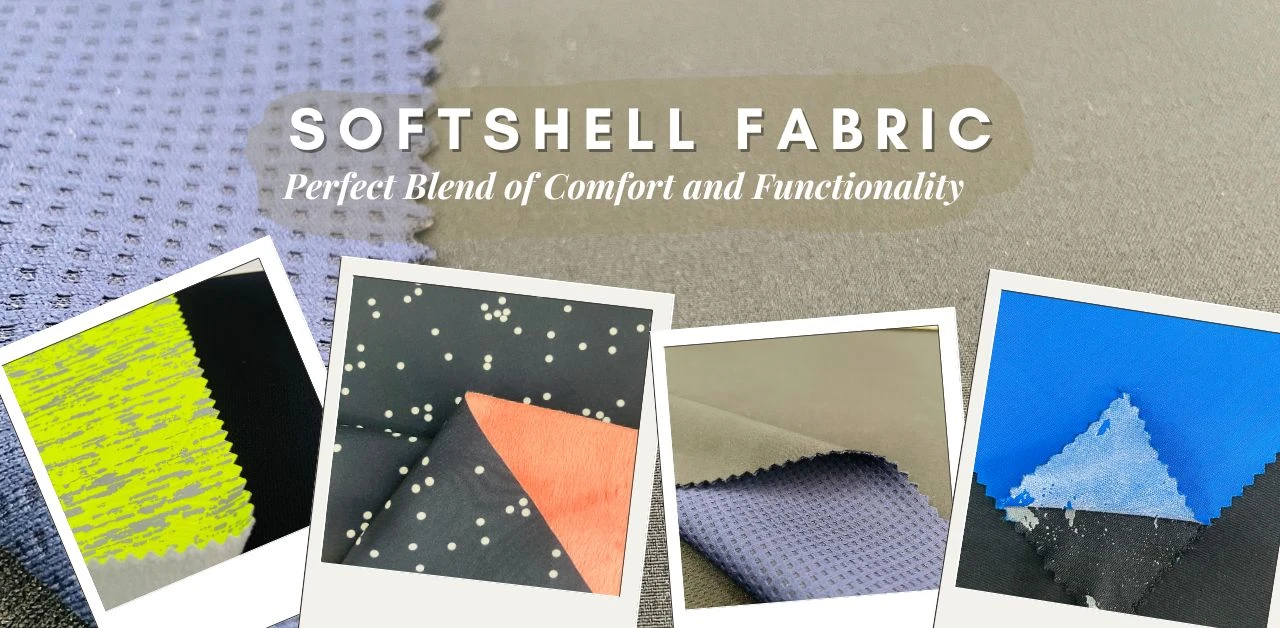
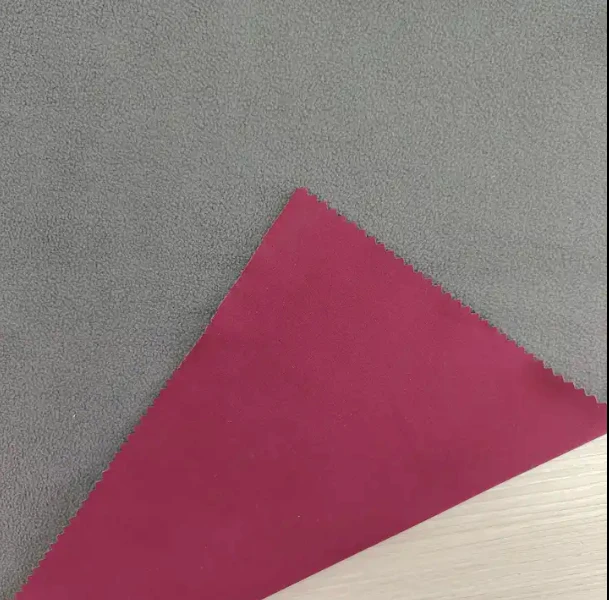
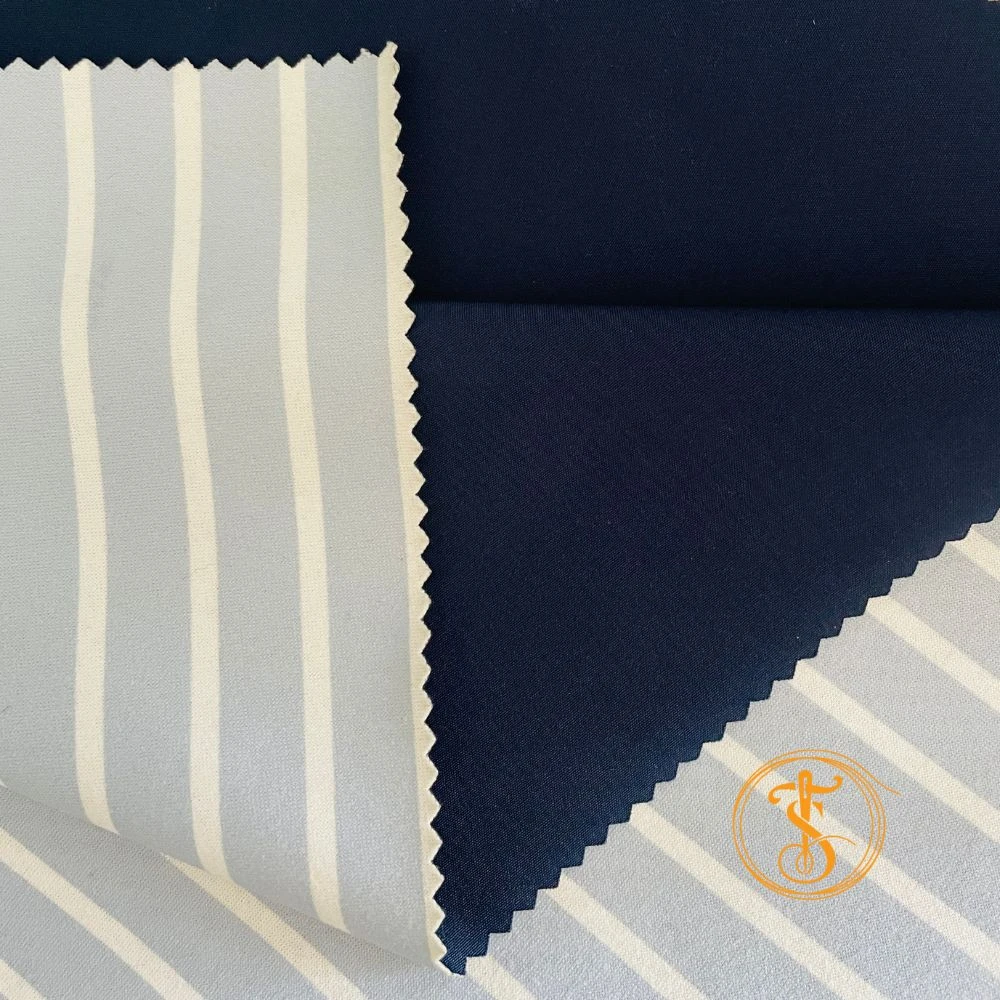
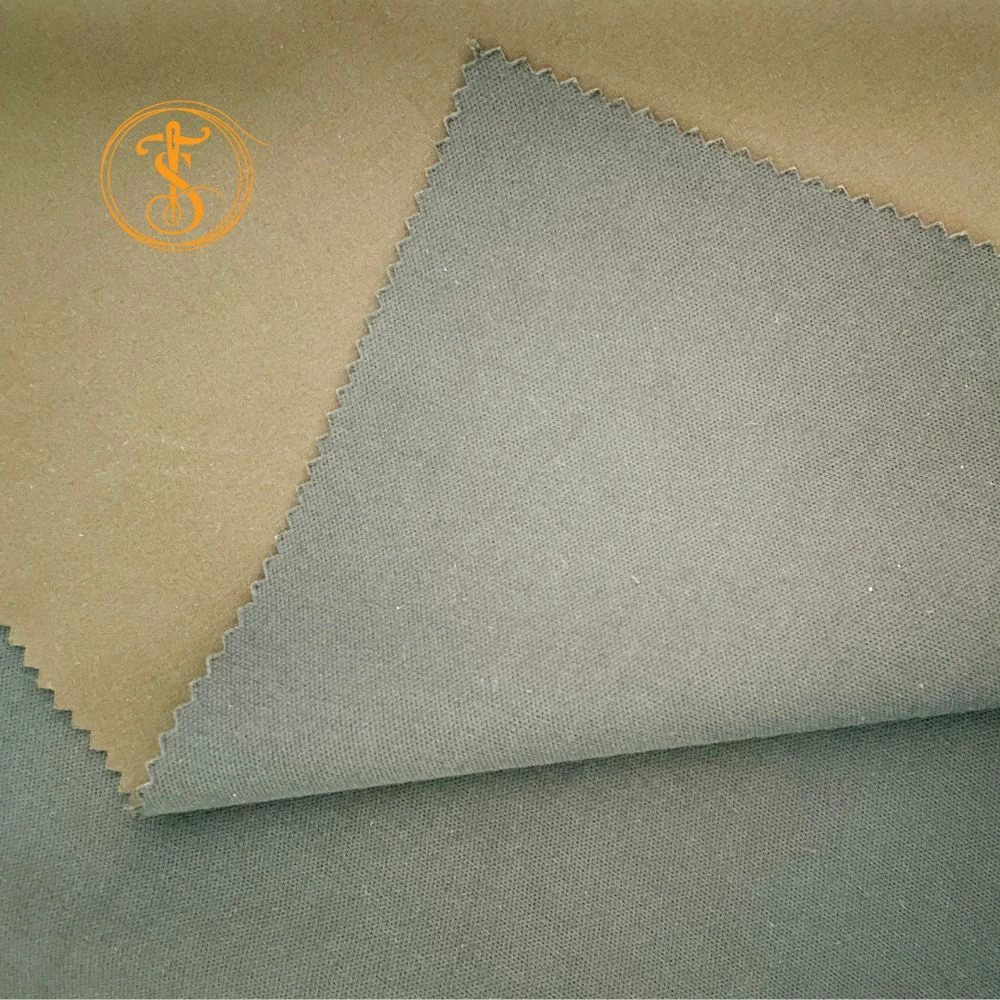
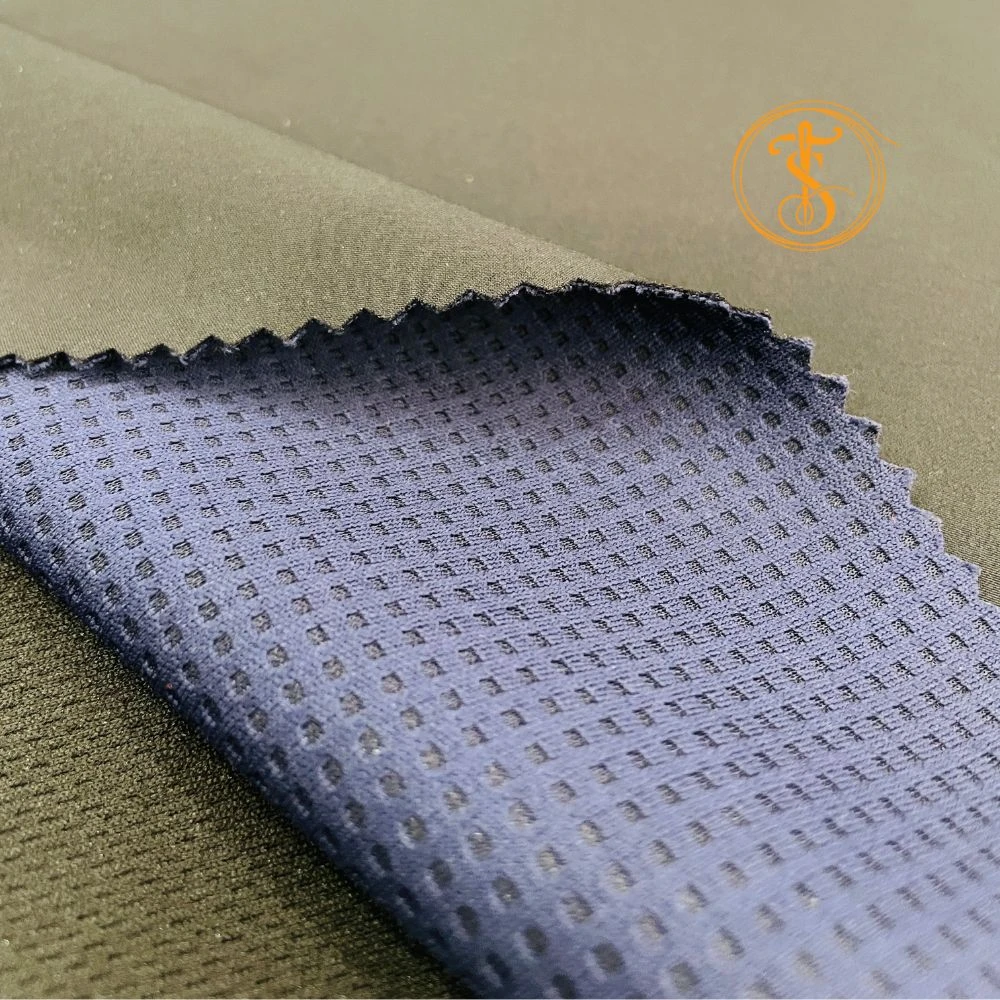
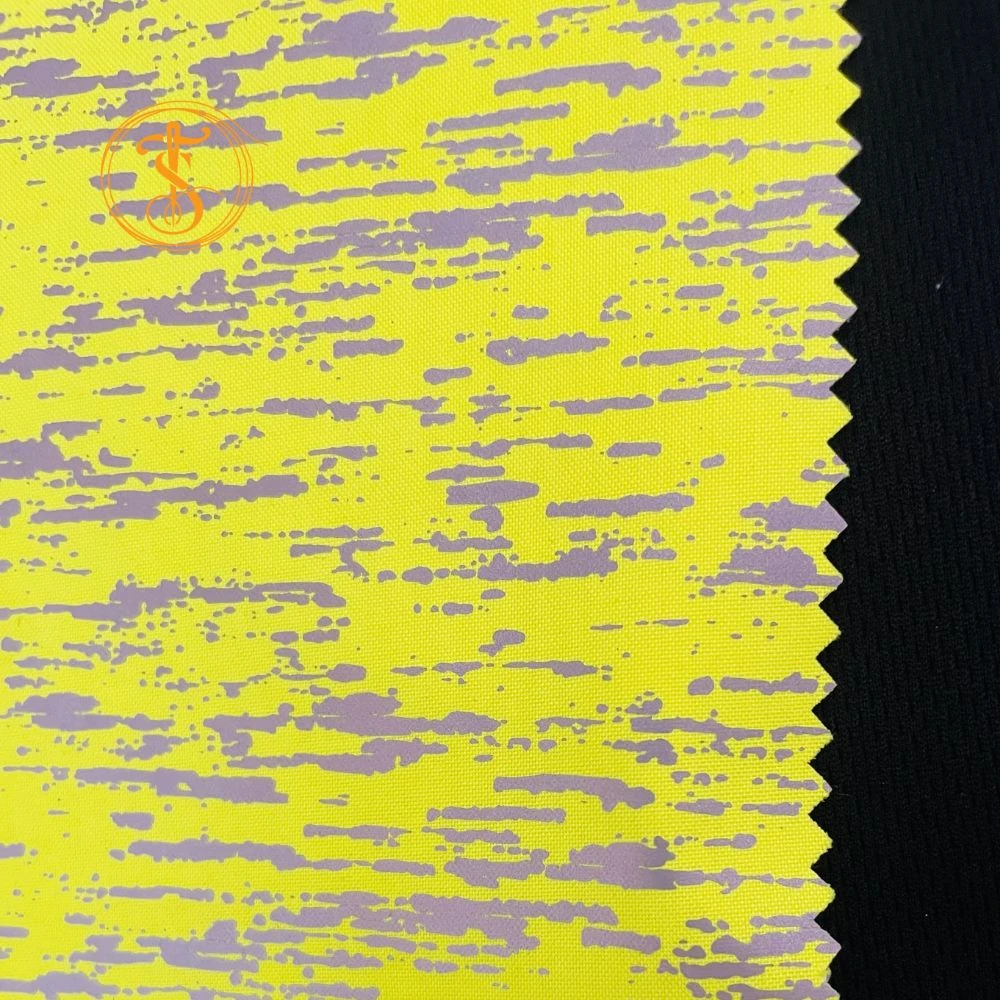
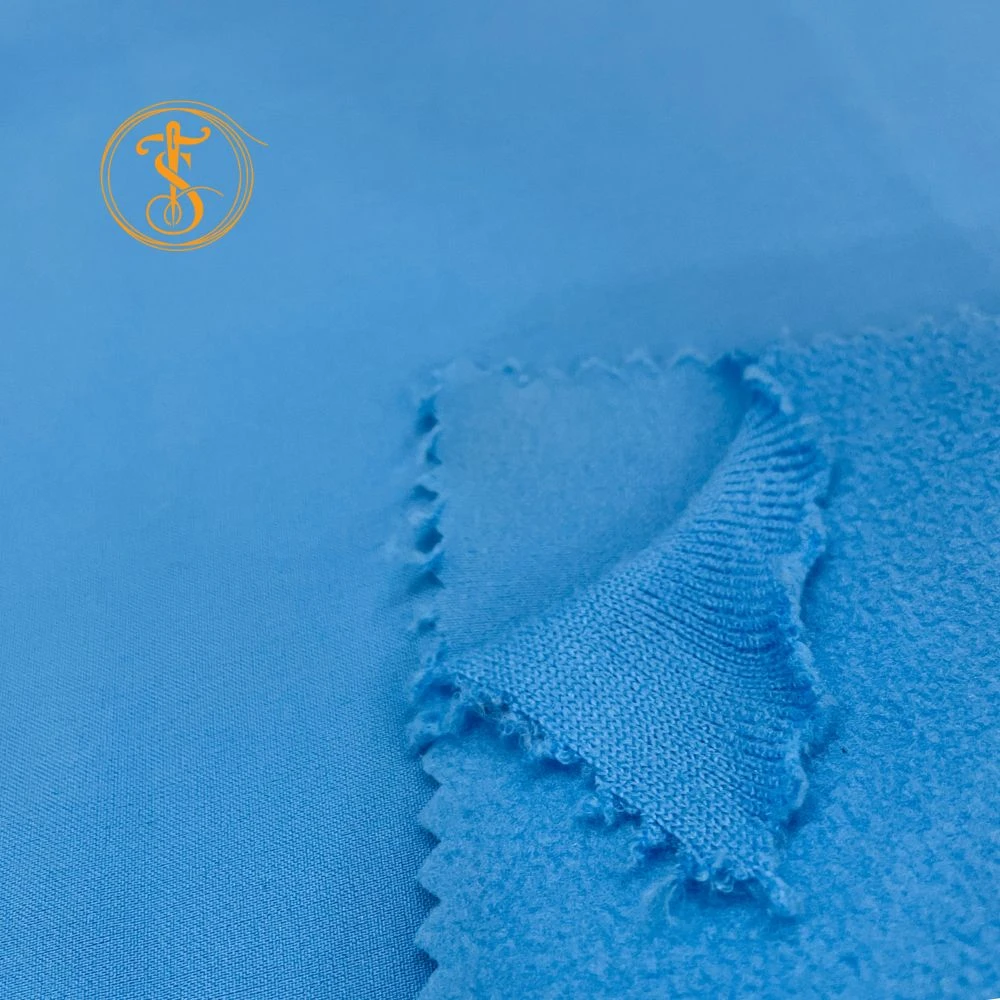
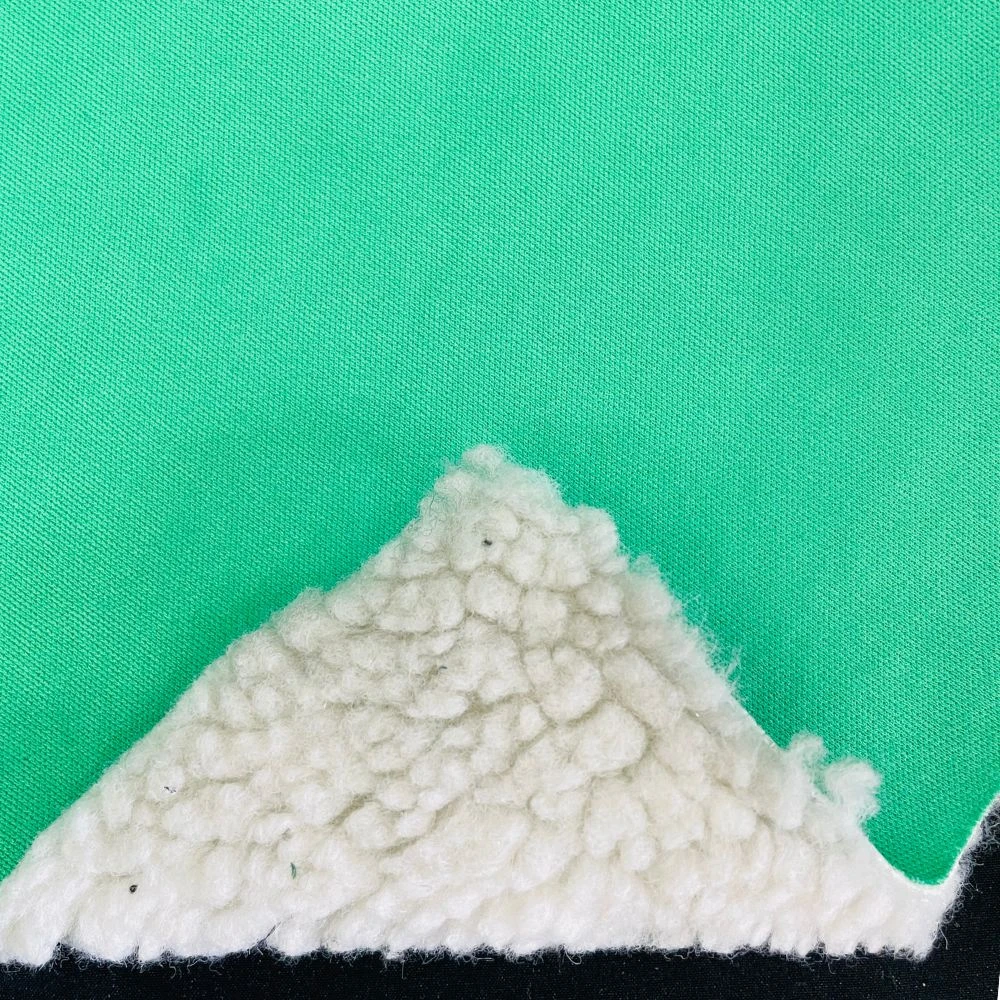
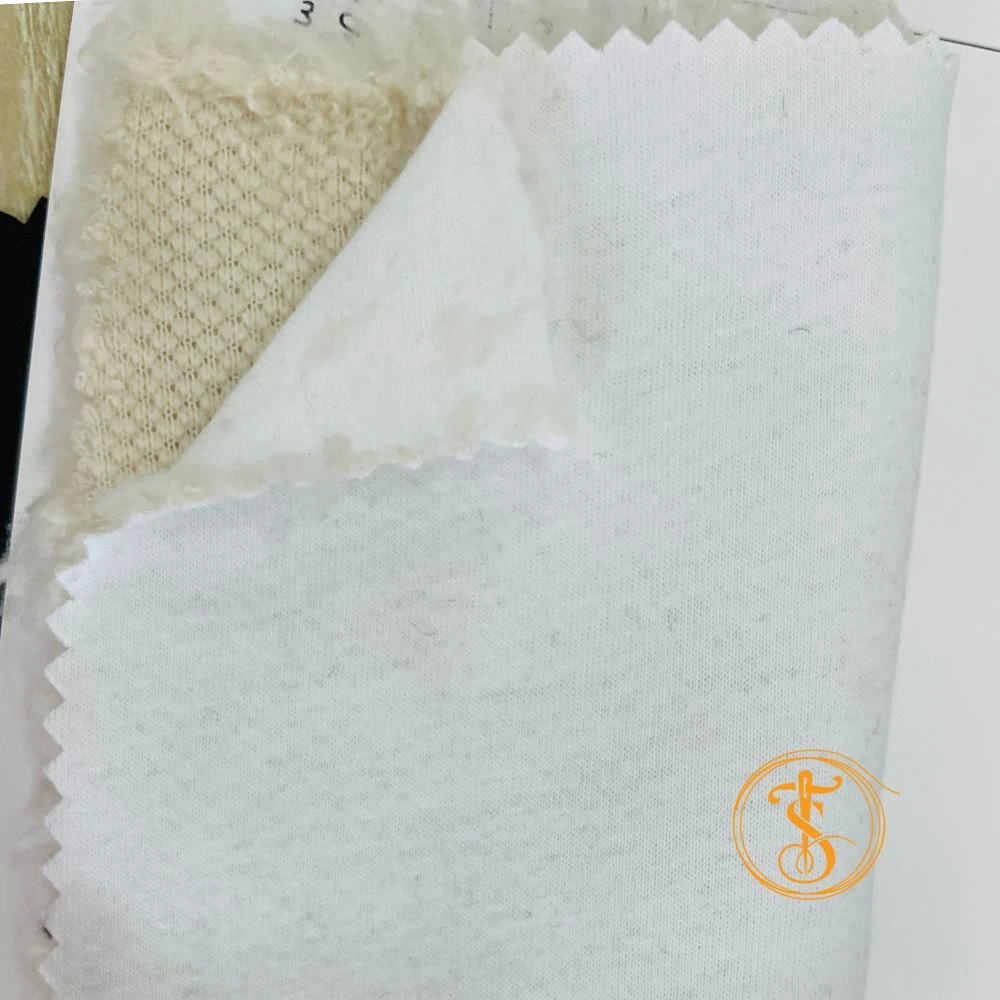
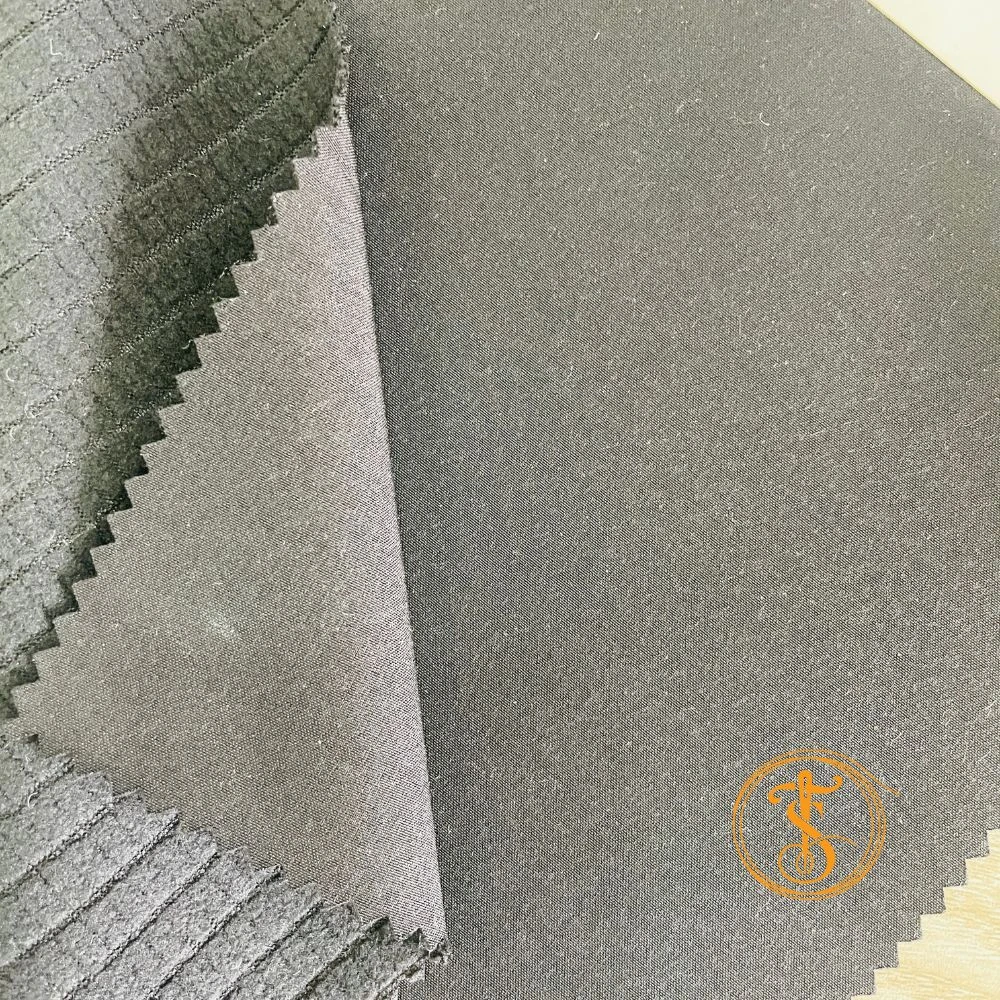
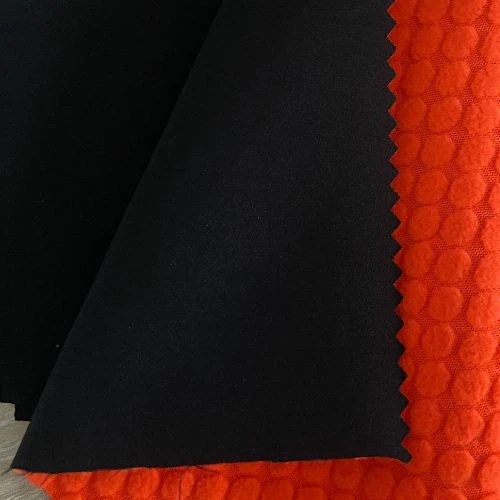
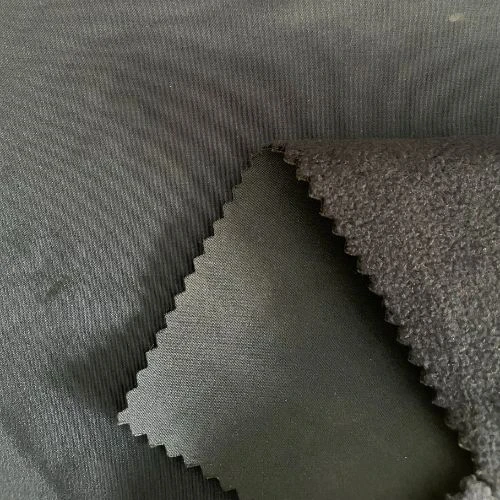
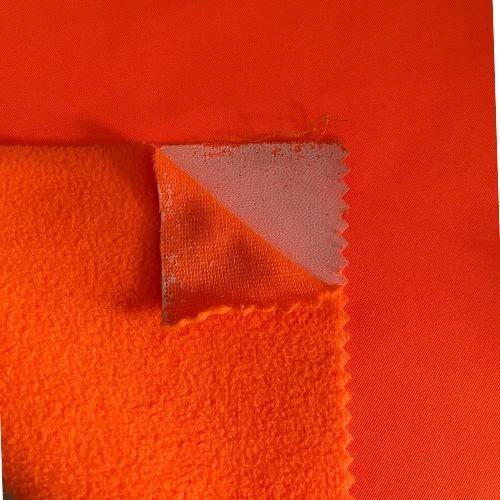





Comments - 00
Leave A Reply
Thanks for choosing to leave a comment.